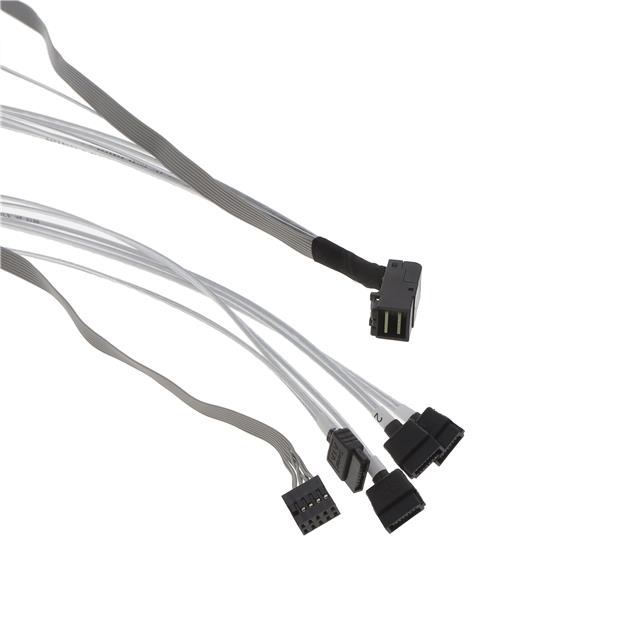

- RFQ
- BOM
-
Contact Us
Tel: +86-0755-83501315
Email: sales@sic-components.com
- Chinese
- English
- French
- German
- Portuguese
- Spanish
- Russian
- Japanese
- Korean
- Arabic
- Irish
- Greek
- Turkish
- Italian
- Danish
- Romanian
- Indonesian
- Czech
- Afrikaans
- Swedish
- Polish
- Basque
- Catalan
- Esperanto
- Hindi
- Lao
- Albanian
- Amharic
- Armenian
- Azerbaijani
- Belarusian
- Bengali
- Bosnian
- Bulgarian
- Cebuano
- Chichewa
- Corsican
- Croatian
- Dutch
- Estonian
- Filipino
- Finnish
- Frisian
- Galician
- Georgian
- Gujarati
- Haitian
- Hausa
- Hawaiian
- Hebrew
- Hmong
- Hungarian
- Icelandic
- Igbo
- Javanese
- Kannada
- Kazakh
- Khmer
- Kurdish
- Kyrgyz
- Latin
- Latvian
- Lithuanian
- Luxembou..
- Macedonian
- Malagasy
- Malay
- Malayalam
- Maltese
- Maori
- Marathi
- Mongolian
- Burmese
- Nepali
- Norwegian
- Pashto
- Persian
- Punjabi
- Serbian
- Sesotho
- Sinhala
- Slovak
- Slovenian
- Somali
- Samoan
- Scots Gaelic
- Shona
- Sindhi
- Sundanese
- Swahili
- Tajik
- Tamil
- Telugu
- Thai
- Ukrainian
- Urdu
- Uzbek
- Vietnamese
- Welsh
- Xhosa
- Yiddish
- Yoruba
- Zulu
- Kinyarwanda
- Tatar
- Oriya
- Turkmen
- Uyghur
What is a Computer Chip?
A computer chip is a tiny wafer of semiconductor material embedded with electronic circuits. It contains millions of tiny electronic components called transistors, and the main function of these transistors is to transmit data signals.
The Developmental Odyssey of Computer Chips
The journey of computer chips is a remarkable tale of continuous innovation and technological leaps. It all began with the era of vacuum tubes, large and cumbersome devices that were the forerunners of modern electronics. These tubes, used in early computers like the ENIAC, were plagued by high failure rates, excessive power consumption, and significant heat generation.
The transistor, invented in 1947 by John Bardeen, Walter Brattain, and William Shockley at Bell Labs, marked a revolutionary turning point. Smaller, more energy - efficient, and far more reliable than vacuum tubes, transistors rapidly replaced them in electronic devices. This led to the development of more compact and powerful computers.
The next monumental step was the invention of the integrated circuit in 1958. Jack Kilby of Texas Instruments created the first integrated circuit, which combined multiple transistors and other electronic components on a single piece of semiconductor material. A year later, Robert Noyce, co - founder of Fairchild Semiconductor and later Intel, improved on this concept by placing an entire circuit on a single silicon chip. This breakthrough enabled mass production of devices with integrated circuits, laying the groundwork for the digital age.
In 1971, Intel introduced the 4004, the world's first microprocessor. This single - chip device contained a central processing unit (CPU), capable of executing a set of instructions. It was a game - changer, as it allowed for the creation of smaller, more affordable computers, leading to the personal computing revolution. As time progressed, the number of transistors that could be packed onto a chip doubled approximately every two years, a phenomenon known as Moore's Law. This exponential growth in transistor density led to the development of more powerful and efficient chips, driving advancements in all aspects of computing, from personal computers and smartphones to supercomputers and data centers.
The Intricate Structure of Computer Chips
At the heart of a computer chip lies a wafer of semiconductor material, most commonly silicon. Silicon is favored for its unique electrical properties. In its crystalline form, silicon atoms are arranged in a highly ordered lattice structure. Each silicon atom shares its four outer electrons with neighboring atoms through covalent bonds.
Embedded within this semiconductor wafer are millions or even billions of transistors, which are the building blocks of the chip's functionality. Transistors act as tiny electronic switches, capable of toggling between two states - on and off - representing the binary digits 0 and 1. These binary states form the basis of all digital information processing.
In addition to transistors, computer chips also contain other components such as resistors, capacitors, and interconnects. Resistors control the flow of electrical current, capacitors store electrical charge, and interconnects are the tiny wires that connect all the components together, allowing for the transfer of electrical signals.
Modern chips are highly complex, with multiple layers of components. Some chips can have up to 100 layers, each precisely aligned with nanometer - scale accuracy. These layers can include different types of transistors, memory cells (in the case of memory chips), and various logic circuits that perform specific computational tasks.
In terms of functional classification, computer chips can be divided into four categories:
Memory chips: They are used to store programs and data in computers and storage devices. For example, RAM chips provide temporary storage, while flash drives and solid-state drives (SSDs) can permanently store information. Flash memory cells can store data even when the power is turned off.
Logic chips: Also known as processor chips, they are used to process data to complete tasks and are equivalent to the "brain" of modern electronic devices. For example, the CPU is the main type of logic chip in the microprocessors of servers and other computing hardware. In addition, there are also those designed for specific functions, such as the graphics processing unit for optimizing visual display and the neural processing unit for deep learning and machine learning applications.
ASIC (Application-Specific Integrated Circuit): It is designed to perform repetitive processing routines for specific applications and is often mass-produced. It is applied to single-purpose devices such as barcode scanners. The chip that performs complex mathematical routines in Bitcoin mining is also an application of ASIC.
SoC (System on a Chip): It is a newer type of chip. All the electronic components required for the entire system are integrated within a single chip. Its functions are more extensive than those of a microcontroller. It can not only integrate the CPU, memory, and I/O processing but also integrate functions such as graphics, audio, camera, and video processing.
The Precision - Driven Manufacturing Process
The manufacturing of computer chips is an extremely precise and complex process, often carried out in ultra - clean environments known as "clean rooms." The process begins with the creation of a silicon wafer, which is typically grown from a single crystal of silicon.
Photolithography is a key step in chip manufacturing. In this process, a light - sensitive material called photoresist is applied to the silicon wafer. Then, a pattern of the chip's circuitry is projected onto the photoresist using ultraviolet light through a mask. The exposed areas of the photoresist are either removed (in positive photoresist) or remain (in negative photoresist), creating a pattern that corresponds to the desired circuit layout.
Doping is another crucial process. By introducing small amounts of impurities, such as boron or phosphorus, into specific regions of the silicon wafer, the electrical conductivity of those regions can be precisely controlled. This creates n - type and p - type semiconductors, which are essential for the operation of transistors.
After photolithography and doping, etching processes are used to remove unwanted material from the wafer, further defining the shape and structure of the transistors and interconnects. Multiple layers of these processes are repeated to build up the complex structure of the chip.
The Inner Workings of Computer Chips
Computer chips operate based on the principles of digital electronics. In a microprocessor chip, for example, the CPU fetches instructions from memory. These instructions are then decoded to determine what operation needs to be performed. The arithmetic and logic unit (ALU) within the CPU then executes the operation, which could involve arithmetic calculations like addition and multiplication, or logical operations such as AND, OR, and NOT.
Memory chips, on the other hand, are designed to store and retrieve data. Random - access memory (RAM) chips allow for quick read and write operations, making them essential for a computer's immediate data storage needs. Different types of RAM, such as static RAM (SRAM) and dynamic RAM (DRAM), have different characteristics in terms of speed, capacity, and power consumption.
In modern systems, multiple chips work in tandem. A motherboard in a computer, for instance, houses the CPU, memory chips, and various other chips that handle tasks such as graphics processing, input/output operations, and data storage interface. These chips communicate with each other through a complex network of buses, which are electrical pathways that carry data, address, and control signals.
The Ubiquitous Applications of Computer Chips
Computer chips have infiltrated every aspect of modern life. In personal computing, they power our laptops, desktops, and tablets, enabling us to perform a wide range of tasks from word processing and web browsing to running complex software applications and high - end gaming.
Smartphones are also heavily reliant on chips. A typical smartphone contains a system - on - a - chip (SoC) that integrates a CPU, GPU (graphics processing unit), memory, and various other components. These chips enable features such as high - resolution displays, fast internet connectivity, and advanced camera functions.
In the automotive industry, chips are used for engine control, anti - lock braking systems, and increasingly, in autonomous driving technologies. They process data from sensors such as cameras, radar, and lidar to make decisions about vehicle operation.
Industrial control systems rely on chips to automate manufacturing processes, monitor and control machinery, and ensure the efficient operation of factories. Data centers, which store and process vast amounts of information for the internet, are filled with powerful server chips that handle tasks such as web hosting, cloud computing, and data analysis.
Even in emerging technologies like artificial intelligence and the Internet of Things (IoT), computer chips play a pivotal role. AI - specialized chips, such as GPUs and neural network processing units (NPUs), are designed to accelerate the complex calculations required for machine learning algorithms. In the IoT, numerous small, low - power chips are used in devices like smart home sensors, wearables, and industrial monitoring devices, allowing them to collect and transmit data.
The Future Horizons of Computer Chips
Looking ahead, the future of computer chips is filled with exciting possibilities. As Moore's Law approaches its physical limits, researchers are exploring new materials and technologies to continue the trend of increasing chip performance. For example, the use of new semiconductor materials like gallium nitride (GaN) and silicon carbide (SiC) is being investigated. These materials offer advantages such as higher electron mobility, allowing for faster - switching transistors and potentially more energy - efficient chips.
Quantum computing is another area that holds great promise. Quantum chips, which operate based on the principles of quantum mechanics, have the potential to solve certain types of problems much faster than classical computers. Although still in the research and development phase, significant progress has been made in recent years.
The development of 3D chip stacking technology is also on the rise. This involves stacking multiple layers of chips on top of each other, which can increase the density of components and improve communication between them, leading to more powerful and compact computing devices.
In conclusion, computer chips are the unsung heroes of the digital age. Their development, structure, manufacturing, operation, and applications have had a profound impact on our lives, and their continued evolution will undoubtedly shape the future of technology in ways we can only begin to imagine.
Introducing our latest computer IC, designed to deliver high performance and efficiency for all your computing needs. Our IC is built with cutting-edge technology and superior design, ensuring smooth and seamless operation for your computer systems. The high-quality components used in our IC are designed to provide reliable and consistent performance, making it an ideal choice for both home and business applications. With its advanced features and excellent compatibility, our IC offers superior speed and processing power, allowing you to run multiple programs and applications with ease. Whether you are a gamer, a professional, or a casual user, our computer IC is the perfect solution to enhance your computing experience. Upgrade your system with our computer IC, and enjoy unparalleled performance and reliability for all your computing tasks.
https://www.sic-components.com/integrated-circuits-ics

Hot Products
View MoreRelated Blogs

2000+
Daily average RFQ Volume

30,000,000
Standard Product Unit

2800+
Worldwide Manufacturers

15,000 m2
In-stock Warehouse

























 Wishlist (0 Items)
Wishlist (0 Items)